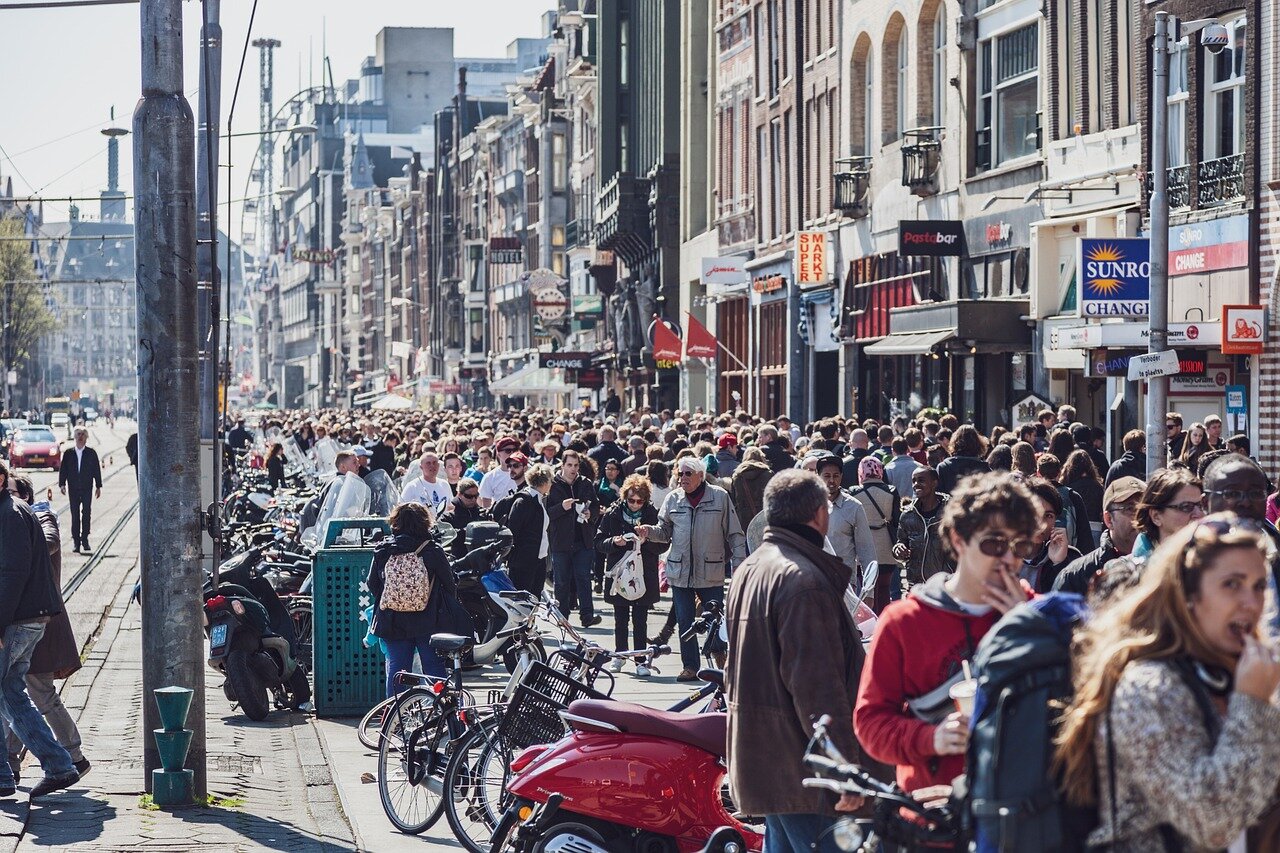
Shortly before the COVID-19 pandemic, I was walking through the historic centre of Prague when I once again found myself wondering: am I still in the heart of a city with such a rich history and UNESCO World Heritage status or have I wandered into a Disneyland? Souvenir shops with Russian Matryoshkas, “bubble makers” and animal-costumed performers in the Old Town Square, Thai massage parlours with brightly flashing banners in centuries-old buildings, drunken groups of British tourists convinced they are in a living museum where no one lives, countless currency exchange offices, and the absence of civic infrastructure such as a simple grocery store – unless, of course, one is in search of a minimarket with absinthe or cannabis. Although this situation has improved as Prague works to reframe its image from a “low-cost destination” to a premium cultural, historical, and gastronomic brand, this, I thought, was what overtourism feels like.
A complex socio-psychological phenomenon
In the summer of 2024, the media again highlighted the growing resistance of citizens in European sought-after destinations to the pressures of tourism. The term overtourism has not only captured media attention but has also been widely discussed in academia since the late 2010s. Its roots, however, are far from new, reaching back to the 1970s. What is overtourism, what drives it, and how can it be addressed?
Overtourism is a complex socio-psychological phenomenon, often described as the tipping point where tourism development begins to cause more harm than good. At its core are the perceptions of local communities, who evaluate tourism based on its impact on their economic, social, and psychological well-being – in simple terms, whether it improves their quality of life. Communities generally support tourism only when its benefits outweigh its drawbacks. However, when negative impacts such as overcrowding, rising living costs, or environmental degradation outweigh the positives, overtourism arises.
Shaped by various trends
The phenomenon is often associated with urban environments, but it can also occur in rural areas, coastal and island settings, as well as at natural and cultural heritage sites. It typically emerges during peak seasons and tends to be limited to specific areas within a destination.
Overtourism is shaped by contemporary societal, technological, and mobility trends. Key drivers include growing global wealth and an expanding middle class, reduced travel costs (particularly through low-cost carriers), the rise of the sharing economy, and the influence of social media. However, its root cause lies in a growth-oriented mindset among governments, marketing organisations, and tourism providers, combined with a lack of long-term planning by decision-makers at all levels.
Short-term economic priorities dominate
For decades, policymakers and service providers have focused primarily on maximising visitor satisfaction and creating unique visitor experiences. This market-centred approach has often neglected the well-being of local communities, leaving them with little influence over tourism development. While discussions about overtourism since 2017–2018 have increased general awareness of the need to balance local well-being with visitor demands, the intensity of tourism-related protests in 2024 has revealed that short-term economic priorities still dominate tourism planning and decision-making.
This focus on economic gains is reflected in the reluctance to adopt measures that would significantly limit visitor numbers. One alternative, such as sharply increasing prices to control visitor flows, raises concerns about social equity by potentially excluding lower-income groups. For example, Bhutan imposes a tourist tax of 100 USD per day, the highest in the world. But should future destinations cater exclusively to affluent tourists?
Other commonly used strategies include spreading visitors over time, dispersing them to less crowded sites, regulating accommodation capacity, limiting access to specific locations or activities, and targeting “valuable” visitors who contribute more to the local economy.
Venice has implemented a five Euro entrance fee for day visitors. Prague has increased accommodation fees and banned disruptive activities such as “pub crawls.” Amsterdam has launched campaigns to discourage problematic tourist behaviour, restricted short-term rentals, and halted the opening of new tourist-oriented stores and hotels.
A growing demand from citizens to get involved
While restrictive measures are necessary to address overtourism, they are not sufficient. The intensity of public protests highlights a growing demand from citizens for greater involvement in decisions that affect their lives. A more sustainable and equitable solution requires the early and active participation of local communities in tourism planning and decision-making. These communities must live with the consequences of planning decisions – they should be involved in their formulation.
Restoring balance is crucial. The tourism industry must extend decision-making processes to include the perspectives of the local communities on which it depends. The destination community provides not only the community assets (landscapes and heritage) and public goods (parks and museums) but also hospitality (welcoming smiles and friendliness) – central components of the tourism experience. Only then can destinations remain both great places to visit and great places to live.
Veronika Jánová
Veronika Jánová is a research assistant at the Deggendorf Institute of Technology. Her research interests include participatory destination governance and tourism acceptance.










